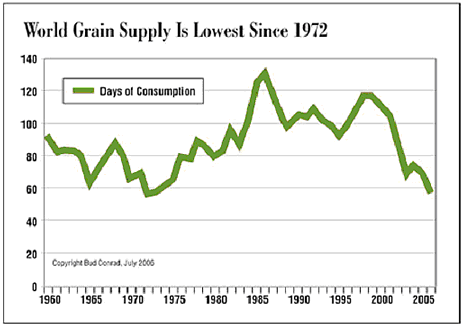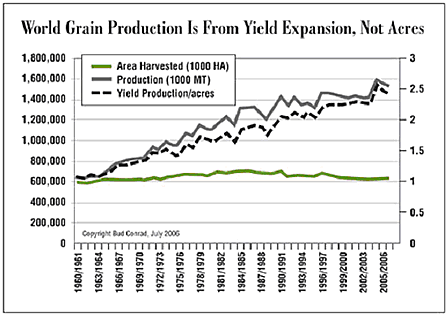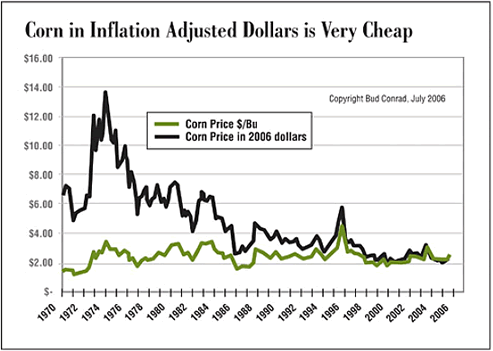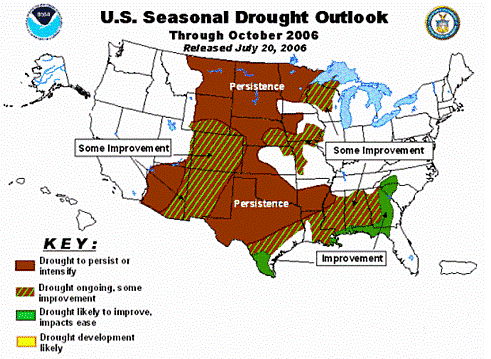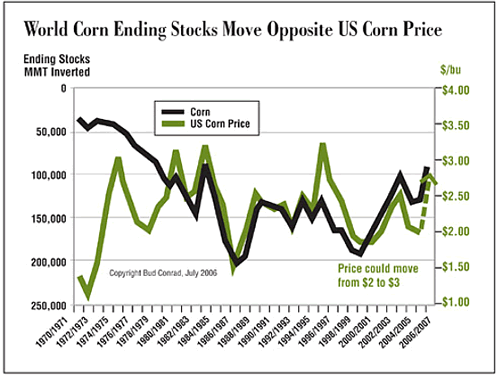| Home | About Us | Resources | Archive | Free Reports | Market Window |
Playing the TrendBy
Saturday, August 5, 2006
Dr. Steve Sjuggerud’s note: Contributing today’s essay is the chairman of Casey Research and New York Times best-selling author Doug Casey. Doug has been around the world hundreds of times looking for great investment opportunities. Read on to learn what he’s seeing now...
If you share my general view of things, it would be worth pondering how you can position your portfolio to weather the storm and, more importantly, profit from it. Stating the obvious, I believe there are few better ways to play this hand than with precious metals and carefully selected junior companies that explore for precious metals. As detailed in the lead article of our December 2005 edition, “How High Will Your Gold Shares Go?” few, if any, other sectors are likely to provide you as much upside as gold and silver over the months and years just ahead. However, as we have been beating that particular drum hard in recent years, we are going to look past the precious metals to briefly address the question, “What else?” Here’s an idea about what should do well as the current trend unfolds… Grain: The Third Horse The third horse of the Apocalypse is the black horse with a scale offering “A quart of wheat for a denarius,” signifying the high rationing prices of famine. Worldwide concern over high oil prices, inflation and the Federal Reserve’s handling of interest rates continues to obscure an even more dangerous development: the tightening supply of grain, especially corn for raising livestock. As there’s been so little public discussion of this growing but silent shortage, we may have an opportunity as early speculators. In fact, grain today has the potential to be as profitable as our early call on uranium, back in 1998, when most people wrongly believed the metal was dead in the water. Grain Supplies The last lean years for grain supplies were in the early 1970s. Back then, the U.S. stock market dropped 40%, a president was impeached, and wage and price controls were imposed in a vain attempt to slow inflation. Today, as you can see from the following chart, global supplies of all grains have shrunk back to levels not seen since the last crisis.
As you can see from the next chart, growth in agricultural production in modern times hasn’t been from plowing more land, but rather from using better technology, such as hybrid seeds and better pesticides and fertilizers. These things have been fantastic for increasing yields, but the vastly diminished genetic diversity, plus the creation of gigantic monocultures over the years, is an invitation to disaster at some point. This is something to think about, although the eventuality is not something to make a bet on at the moment. At some point, and it may already be happening, crop yield per acre may flatten out. Given growing population, grain prices will rise enough to stimulate the opening of new areas dedicated to mass agriculture, likely in far-away places, or change consumption patterns where less meat is used, to ward off shortages and famine. It is important to note that the yield increases are dependent on oil as fertilizer, pesticides and transportation, and those costs are obviously up.
Demand The first use of higher income in emerging economies is to eat better. So as economic growth proceeds in China and India, their huge populations are putting increasing pressure on food supplies. Our longtime friend Clyde Harrison, a major force behind the Rogers Commodities Index, points out that China has 20% of the world’s population but just 7% of the world’s land. And he points out that that country’s unstoppable economic growth will push grain imports up from 14 million tonnes today to 57 million tonnes in 2020. Then there’s India… but you get the picture. Given the higher demand for food and the inflation in pretty much all other commodities, you’d expect that grains would have moved with the trend. Not so. The chart below shows that the price of corn has been stalled for 40 years. In fact, the situation is even more extreme than that. The red line shows the price in constant dollars, using the purchasing power of 2006 dollars. If it had simply kept up with inflation, corn would be trading at $10.00 a bushel today instead of $2.50.
Then There’s This… Loading more pressure onto the coiled spring, the U.S. breadbasket is in the grip of a persistent drought that now is retarding production during the core growing months. The wheat crop has already suffered serious damage, though the picture for corn is less clear. You don’t need to agree with Al Gore about global warming to notice that a bumper crop just isn’t in the cards for this year. (As you can see from the National Weather Service chart below.)
But even if growing conditions in the U.S. improve next year, a politically engineered boondoggle will be taking corn off the market by the trainload: lavishly subsidized corn ethanol. Despite requiring more energy to make than it produces, ethanol is now the government’s choice oxygenate for making gasoline less polluting. Though it makes no sense economically, government regulations require an increasing element of ethanol in gasoline. That’s why the price of ethanol has doubled in the last year. Notable is that the U.S. supplies 40% of the corn that trades on world markets. So it is eye-opening to see that U.S. usage of corn to manufacture ethanol is expected to match world U.S. exports as early as next year. Against this growing demand, we have falling stocks, as shown below. Note the correlation between available stocks and price. The forecast for corn inventories as of the end of next year indicates corn could move up $1. But any number of wildcard developments (including speculation by the hedge fund trading herd) could send it even higher.
Good investing, Doug Casey About the Author: Doug Casey, Chairman of Casey Research, LLC., is a best–selling author, international investor and entrepreneur. He travels the world looking for exceptional opportunities in real estate and undervalued companies in the natural resource sector (precious metals, oil and gas and more). The author of four best selling books, his Crisis Investing was #1 on the New York Times best-seller list for 29 consecutive weeks. Each month he provides subscribers to his publications, the International Speculator and theCasey Energy Speculator with his best ideas on the world’s best investments. To read the rest of this article including Doug’s advice on how to invest, |
Recent Articles
|


